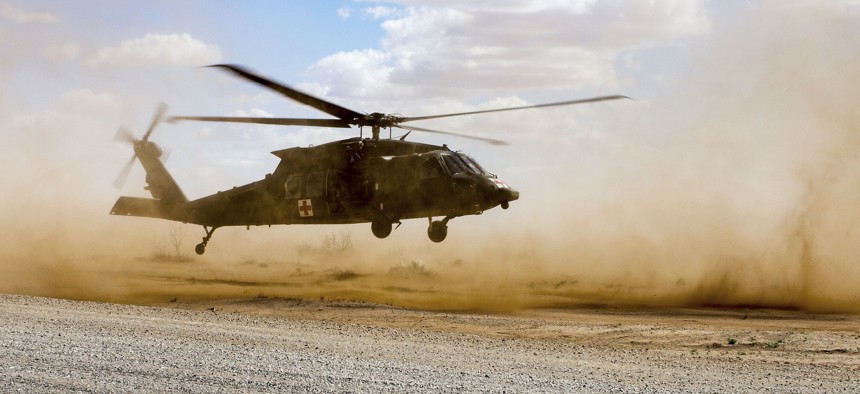ELIZABETH HOWE

The U.S. Army’s next big leap in aviation will be as much about moving bits as rotor blades, said Maj. Gen. Walter Rugen, who directs the service’s Future Vertical Lift Program.
“The Analog Age will not give us the decisive transformational capabilities we need on the future battlefield for the future force,” Rugen said Wednesday at a Center for Strategic and International Studies event on the future of Army vertical lift.
So the FVL program focuses on four development lines: an attack reconnaissance aircraft, a long-range assault aircraft to replace the Black Hawk, unmanned systems, and a modular open-system approach.
While many of the FVL efforts are classified, this last line of effort—to develop digital modules that are widely compatible across an open system—has already been used in field experiments. And it’s “changing the game,” Rugen said.
One “use case” he was able to share involved an Italian joint terminal attack controller, or JTAC, ordering fire on a training target in the U.S.
“That’s very difficult to do: a cross-border call for fire with an international flavor,” Rugen said.
The Italian JTAC inputs data for a call for fire. That data makes its way through a Dutch enclave communication network which then brings that data into the 82nd Airborne to cue U.S. personnel. The Army’s widely adaptable digital modules and an open system of communication were key in executing this exercise, Rugen explained.
“That’s the kind of agility we’re going to need on a future battlefield. We’re going to need to have a very flat organization across our partners, allies, and friends. And that flat organization needs to be very fast and innovative,” Rugen said.
And the digital modular systems are easy to learn.
“We've seen just transformational speed when it comes to things that we hand off to soldiers to fly and fight,” Rugen said. “For example, our UAS used to take 16 minutes to hand off down to the tactical edge. We call it a Class C handover. We did it in 90 seconds. And that's again at the pace of the battle. And that's the step change we're seeing across a whole host of tactical tasks that we need to accomplish at speed to improve.”
And while all these advancements are certainly exciting, Rugen said “jumps to the future” are just par for the course for the Army.
“The Army modernizes about every 40 or 50 years,” he said. “We’re coming out of 20 years of counterinsurgency, and we’re at a similar inflection point that we were in the 70s coming out of Vietnam, where we jumped to the future to get that capability. Now this is much more transformational than the Huey or the 58 or the Cobra—the Vietnam-era fleet. It’s a great opportunity.”
No comments:
Post a Comment